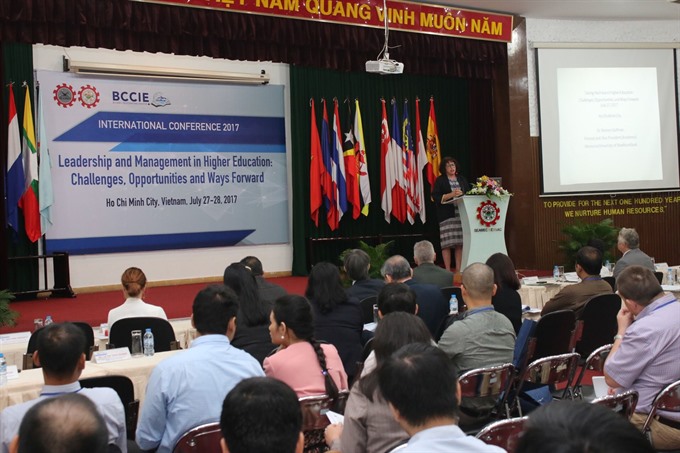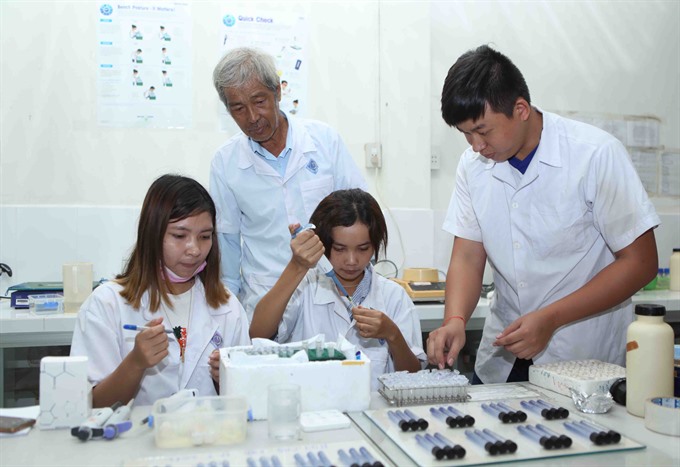 Society
Society

" />Challenges, opportunities and solutions facing higher education institutions were the focus of a two-day international conference that began yesterday at the Southeast Asian Ministers of Education Organisation Regional Training Centre (SEAMEO RETRAC) in HCM City.
 |
| Experts discuss challenges, opportunities and solutions for higher education at SEAMEO RETRAC in HCM City on July 27-28. |
HCM CITY — Challenges, opportunities and solutions facing higher education institutions were the focus of a two-day international conference that began yesterday at the Southeast Asian Ministers of Education Organisation Regional Training Centre (SEAMEO RETRAC) in HCM City.
Professor Noreen Golfman, vice president of Memorial University of Newfoundland in Canada, said that major challenges include changing demographics, rigid curricula and transfer credit protocols, and widely available technology-making content.
“We are in our unsettled age including walls and the hardening of borders, travel bans, growing discrepancy between rich and poor, and climate change,” Goflman said, adding that good collegial governance would help to maintain order.
Watchdogs for standards, ethics and faculty career advancement are all needed, she said.
Professor Doug Hamilton, head of the Master’s programme in Educational Leadership and Management at Royal Roads University’s School of Education and Technology in Canada, said that institutional educational frameworks that communicate academic qualities help give a university or college its unique identity.
Most institutional frameworks combine research from the current literature on learning, teaching, and pedagogical innovation with an inductively-generated description of educational principles and characteristics that guide learning and teaching within the specific institution, Hamilton said.
 |
| Associate Professor Võ Công Thành of Cần Thơ University instructs students to make salt-resistant rice. Major challenges for higher education include changing demographics, rigid curricula and transfer credit protocols, and widely available technology-making content.VNA/VNS Photo Quý Trung |
The development of these frameworks is becoming more prevalent worldwide as universities and colleges strive to define and preserve a unique institutional identity amid a broader post-secondary landscape, he added.
Joclarisse E. Albia of National Chung Cheng University in Taiwan said that ASEAN integration serves as both an opportunity for institutions to legitimise and rationalise their regionalisation and, by association, internationalisation initiatives.
Dr Trần Đức Nga, director of International Relations Office at Hải Phòng Private University, said that risk management was now increasingly used in organisations in order to reduce losses and increase opportunities in a world of uncertainty.
In the sector of higher education, risk management has become a requirement of many quality standards such as the ISO 9001:2015, and the Australian Higher Education Standards Framework, she added.
In Việt Nam, risk management was recently embedded in the Standard of Quality for Higher Education Institutions.
However, the selection of methods used to identify risks is challenging for higher education institutions not only in Việt Nam but also in other countries, she said.
She suggested that the technique of Employing Delphi should be used for identification.
The conference is organised by SEAMEO RETRAC in co-operation with the British Columbia Council for International Education.
It also offers chances for professionally discussing curriculum innovations and experiential learning opportunities for students, applications of ICT in teaching and management, quality assurance in education, and teacher education.
More new collaborations will be initiated after the conference. — VNS




